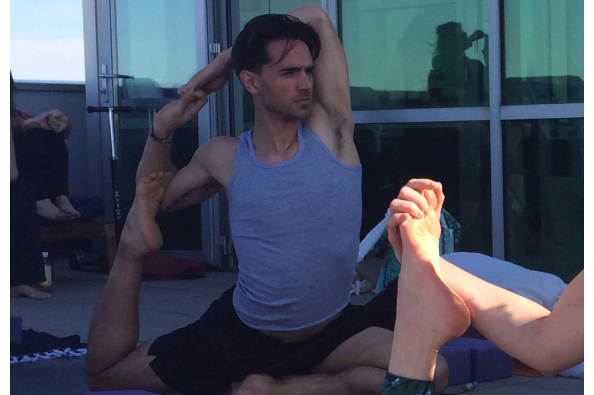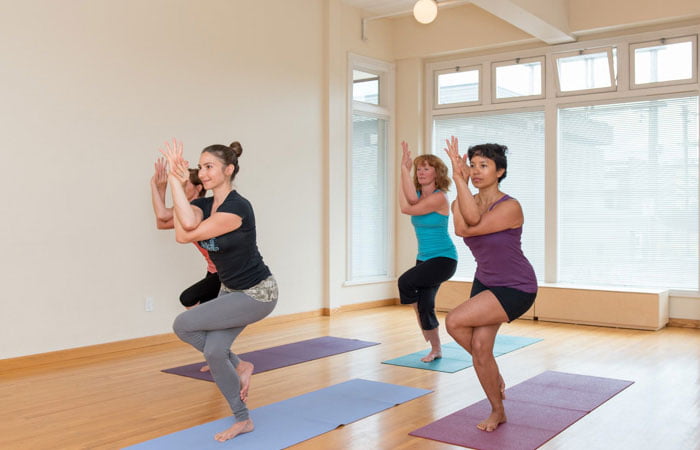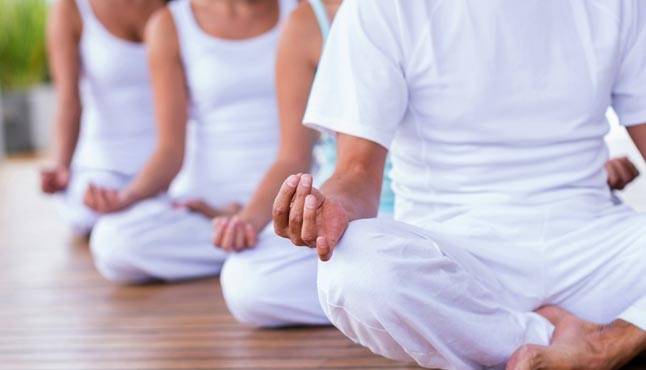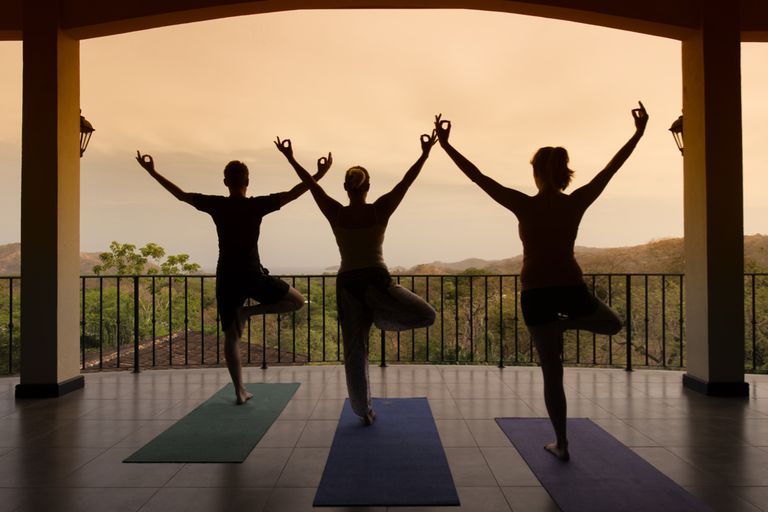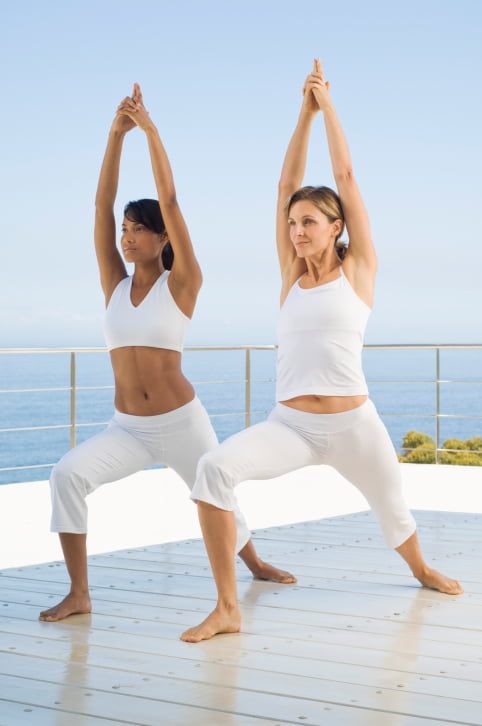
Source:- https://www . yoga-teacher-training . org/2009/01/25/teaching_hatha_yoga_contraindications_fo/
Standing Asanas in yoga means those Asanas which can be done standing. People with knee problem can’t sit on the floor but love to do yoga are in constant search for standing Asanas in Yoga. There is even individuals who are advised to do yoga regularly but have severe pain in the knee; they can try these standing Asanas in yoga.
Table of Contents
Standing Asanas In Yoga
Check out some of the most effective yet easy standing Asanas in yoga to try at home. These standing Asanas in yoga are considered effective in strengthen the legs, thighs etc. Let’s now check out the standing Asanas in Yoga below:
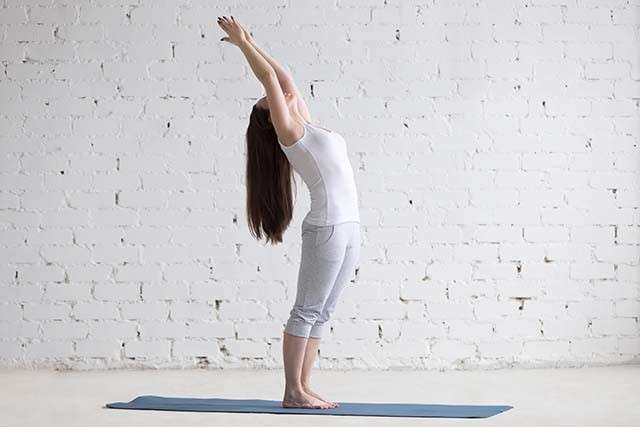
Source:- https://www . femina . in/wellness/health/easy-asanas-to-fight-knee-pain-115371 . html
Tadasana (ताड़ासन) or the Mountain pose
Tadasana is an asana that forms the base for more or less every standing Asanas in yoga. This posture is used to increase the length of the body and make the muscles flexible.
Procedure To Do Tadasana:
- Stand straight on the floor
- Look at a distant entity and focus to avoid distraction
- Raise your hands up in the air in the prayer shape
- Bend backward as much as possible
- Your arms, chest, and shoulders has to remain stretched
- Breath normally
- Hold on for about 30 to 60 seconds
Benefits of Tadasana:
- Practicing this yoga pose helps to alleviate your sciatica
- Helps to improve balance
- Respiratory, nervous, and digestive systems will be regulated
- Reduces flat feet problem
- Makes the spine even more supple
- Your abdomen and buttocks get toned
- With steady practice of Tadasana, your thighs, ankles, and knees become stronger
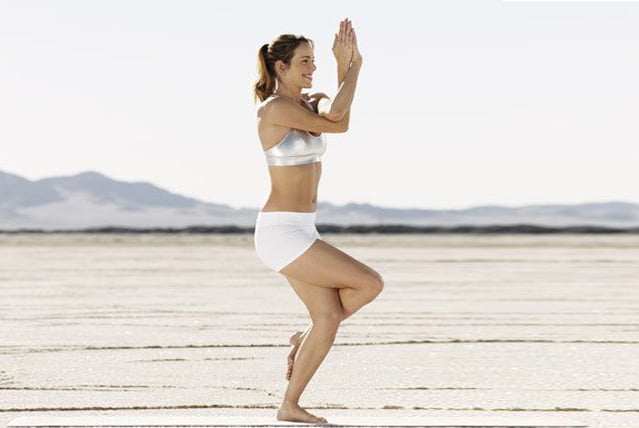
Source:- https://lifenlesson . com/how-to-do-the-eagle-pose-and-what-are-its-benefits-garudasana/
Garudasana (गरुड़ासन) Or The Eagle Pose
Garudasana is named after the word “Garuda”. Garuda means eagle. In this posture you are in the currency of the eagle, hence the name given is “Garudasana”.
Procedure To Do Garudasana
- Stand in Tadasana
- Raise the left leg and thigh over the right leg
- The left thigh should be tilted above the right thigh and keep the left toes towards the ground
- Now move the left leg and bring it behind the right leg in such a way so that the left foot is hinged on the right leg
- Now lift both arms forward
- Place the right arm on the left arm, turn both the elbows 90 degrees and move the right hand in front of the left hand
- Add both palms to form prayer shape
- Breathe normally and stand for 30-60 seconds in this currency
- Now repeat the process on the other side too
Benefits Of Garudasana
- Garudasana strengthens the legs and arms, and tone them
- Stretches on the upper part of the back, waist, and shoulders too
- Garudasana is therapeutic for sciatica and arthritis
- Improve concentration
- Improves physical balance too
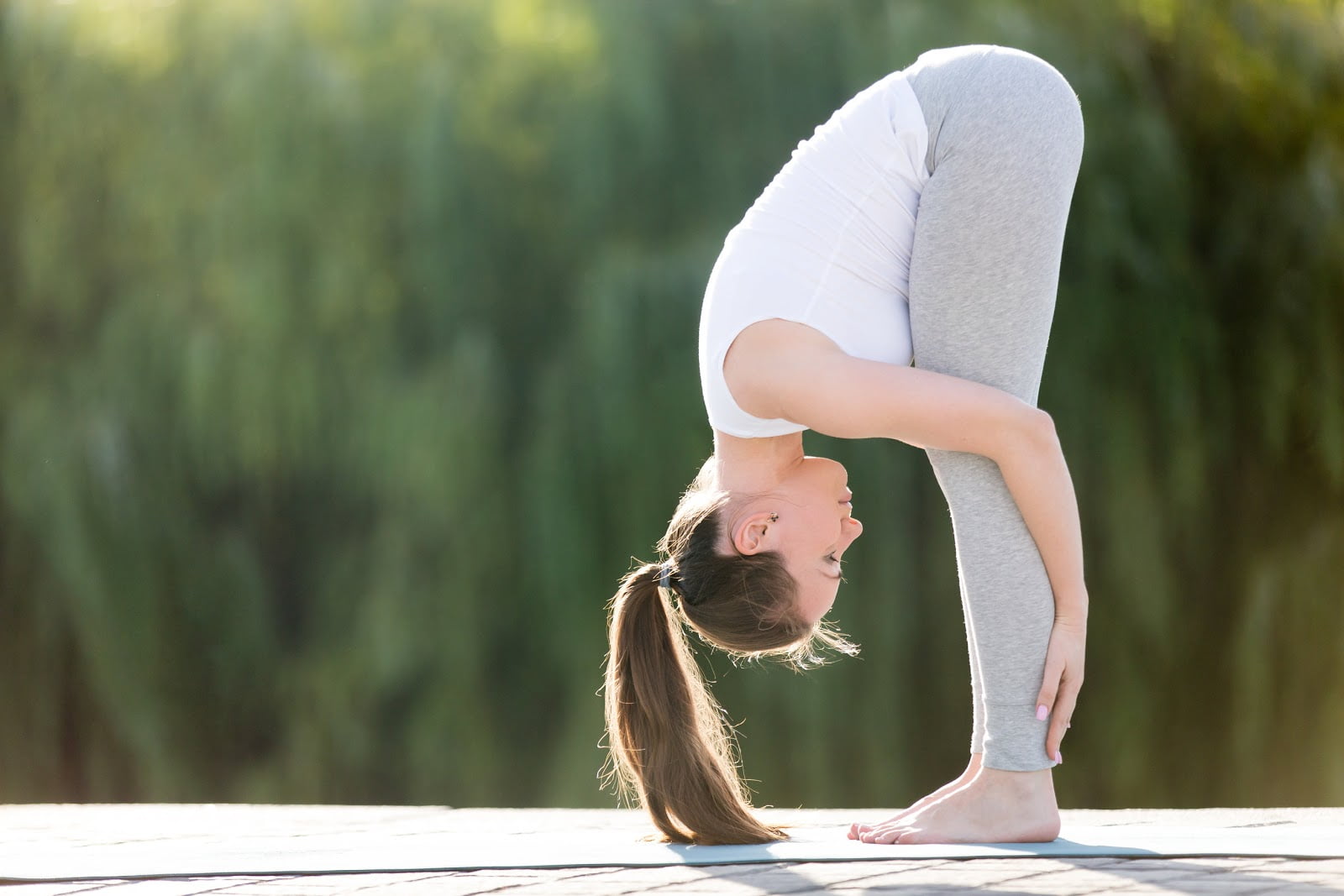
Source:- http://yogapanchi . com/5-yoga-poses-to-fight-cold-and-flu/
Hastapadasana (हस्तपादासन) Or The Standing Forward Bend
- Stand up straight while keeping the legs together
- Bend towards the legs and keep your hands behind or touching the ankles
- Lean your chest towards the knees, and raise the buttocks and tailbone as much as possible
- Stay in this state for 20-30 seconds and take deep breaths.
- Keep your feet and spinal cord straight
Benefits of Hastapadasana:
- Creates a pull in all the muscles found in the body
- Increasing blood flow in the nervous system makes it enlightening
- Makes the spinal cord powerful
- Helps to reduce obesity
- Activates the abdominal organs
- Cures stomach and reproductive organs
- The body becomes flexible
- Blood circulation in the whole body is done properly
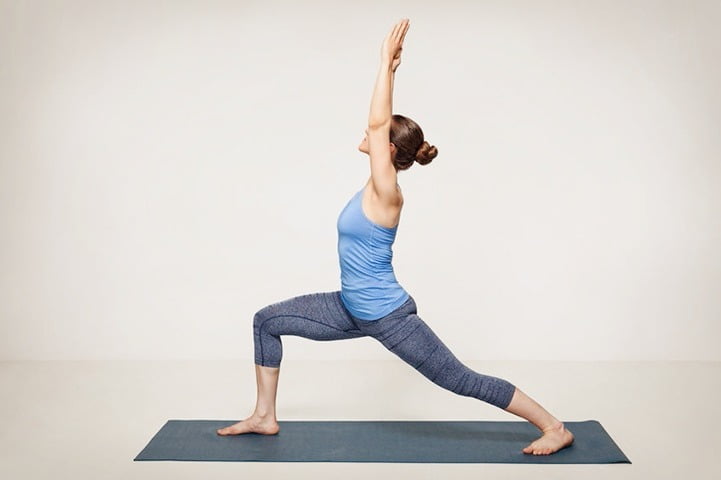
Source:- https://www . artofliving . org/us-en/warrior-pose-veerabhadrasana-or-virabhadrasana
Virabhadrasana (वीरभद्रासन) Or The Warrior Pose
Procedure to Do Virabhadrasana:
- Stand on the floor spreading the legs at a distance of 3 to 4 feet.
- Take the right foot 90° forward and the left foot to 15° backward
- Raise both hands up to the shoulders, palms should be open towards the sky or you can join them in the prayer shape
- While breathing bend your upper body to your back
- Look at the sky
- Stretch the hands in the seat and stretch the hands a bit more
- Gently lower the Pelvis
- Remain steadfast in this posture and keep smiling
- Keep breathing until you get down and leave
- While leaving the breath, bring both hands down from the sides
- Repeat it from the left side. (Rotate the left foot to 90° and the right to 15°)
Benefits Of Virabhadrasana:
- Strengthens the waist, hands, and feet
- Increases the balance in your body
- Very beneficial for those who sit and work
- Very effective in the tightness of the shoulder
- Frees up the tension of the shoulders immediately
- Enhance kindness, courage, and peace in mind
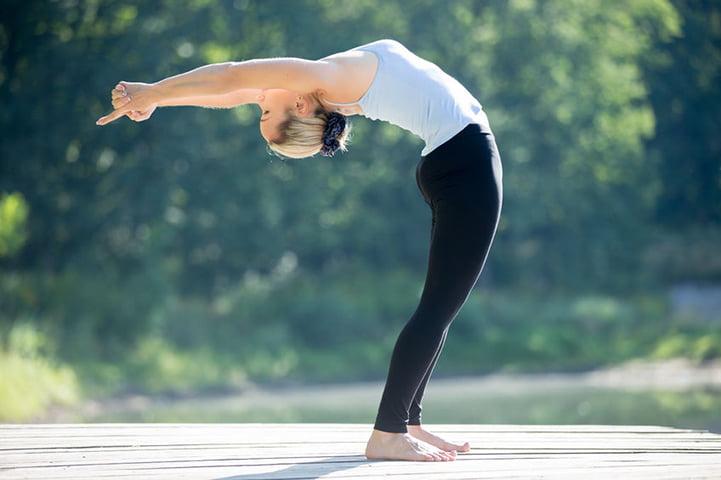
Ardha Chakrasana (अर्धचक्रासन) Or The Standing Backward Bend
In such standing Asanas in yoga, the body appears like a half-circle, which is why this pose is named after Ardha Chakrasana. Here ‘Ardha’ means “half” and ‘chakra’ means “wheel” or “Circle”, and ‘asana’, means “yoga pose”.
Procedure To Do Ardha Chakrasana:
- Stand erect on the floor with both the feet together
- Keep your arms alongside the body
- Extend the hands overhead with the palms close in a prayer shape
- Slowly bend toward your back and push the pelvis forward
- Keep the arms touching your ears
- Keep your knees and elbows straight
- Then keeping the head up, lift the chest upward
- Hold on to this posture for about 30 to 45 seconds
Benefits of Ardha Chakrasana:
- Regular practice of this asana helps to stretch the upper front torso
- This helps to open the chest
- Tones your shoulder muscles and arms muscles
- Increases the flexibility in your spine
Practice these above-mentioned standing Asanas in yoga to say bye-bye to diseases related to leg, thigh, heel, and ankle. However, to get the most benefits out of the standing Asanas in yoga you will have to practice these Asanas regularly. Regularity is the key to success in case of yoga.

